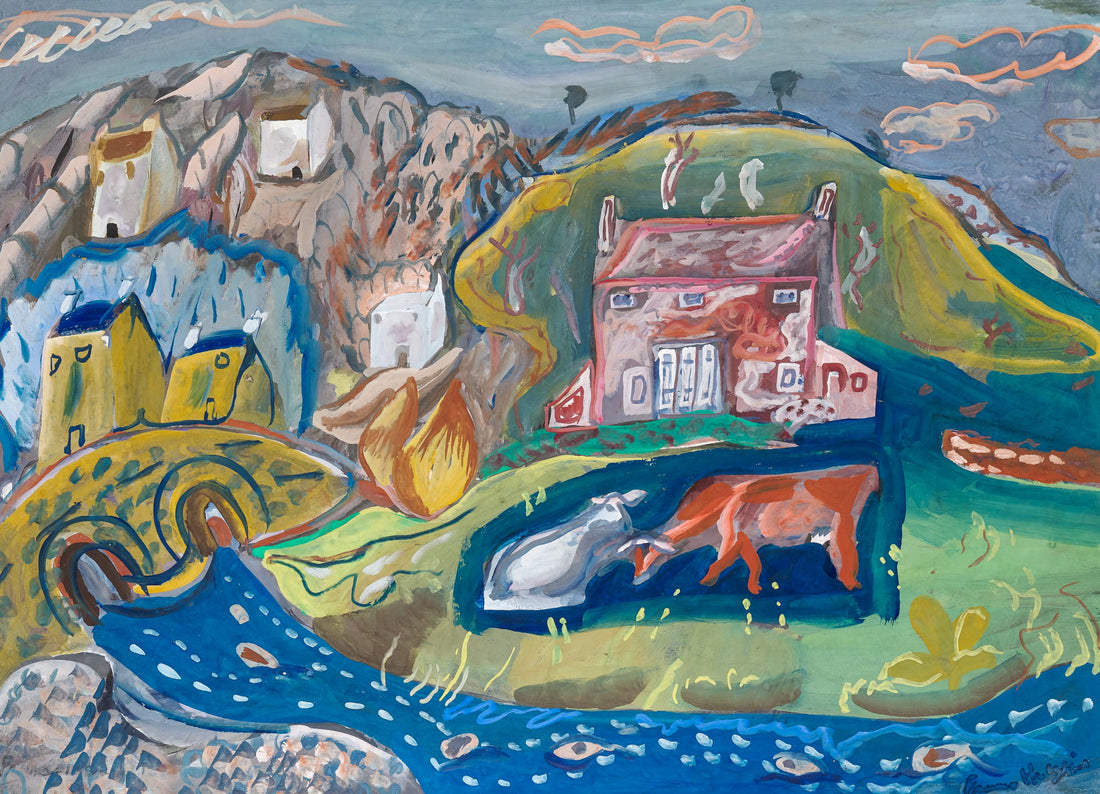Art has a diverse range of styles, and one way to categorize artworks is into three main categories: representational, abstract, and nonrepresentational art.
Representational Art vs. Abstract Art: Representational art aims for realistic depictions of real-world objects, while abstract art uses shapes, colors, and forms to convey emotions and ideas, departing from realistic representation.

Aiguilles of Chamonix, 1849 by John Ruskin
Representational Art Representational art, also known as figurative art, aims to depict objects, events, or subjects from the real world in a recognizable and realistic manner. The artist attempts to create an accurate representation of the subject matter, making it easily identifiable to the viewer. A painting of a landscape, a portrait of a person, or a sculpture of an animal are all examples of representational art.
For instance, take the painting "Mona Lisa" by Leonardo da Vinci, which clearly represents a woman's portrait. The artist carefully captures the details of the woman's face, giving the viewer a clear sense of her appearance.
Abstract Art Abstract art, on the other hand, does not attempt to depict the visible world in a realistic manner. Instead, it emphasizes the artist's inner thoughts, emotions, and ideas. Abstract art uses colors, shapes, lines, and forms to create a composition that may or may not resemble anything recognizable.
Pablo Picasso's "Girl Before a Mirror" is a prominent example of abstract art. The painting uses distorted shapes and colors to represent the inner feelings and emotions of the subject, rather than providing a realistic portrayal.
Nonrepresentational Art Nonrepresentational art, also known as non-objective art, completely departs from the representation of reality. It does not aim to depict recognizable objects, people, or landscapes. Instead, it focuses on shapes, colors, lines, and other visual elements to create an artwork that conveys emotions, concepts, or purely aesthetic experiences.
A famous nonrepresentational artist is Wassily Kandinsky, and his work "Composition II" is a prime example. The painting does not represent any real-world objects, but it is composed of shapes, colors, and lines arranged in a way that evokes feelings and emotions.
Relationship Between the Styles It's important to note that these styles are not mutually exclusive. Some artworks may combine elements of both representational and abstract art, creating what is sometimes called "partly representational" art. Artists may use abstraction to add depth or emotion to their representational works, or they may employ representational elements within abstract compositions.
For example, in the artwork "Composition VIII" by Wassily Kandinsky, although it is primarily abstract, some viewers may interpret representational elements such as faces and figures among the colors and shapes.
View limited edition prints by contemporary artists at Naturalist Gallery.
The world of art is rich and diverse, with artists employing different styles to express their creativity and emotions. Representational art captures real-world objects and subjects, abstract art delves into emotions and ideas, while nonrepresentational art explores shapes and colors to convey deeper meanings. As viewers, appreciating and understanding these various styles enhances our appreciation for the vast beauty and complexity of the art world.
Trees in Bird Garden, Iver Heath, 1913 by Paul Nash
You may also find the following articles helpful:
En Plein Air Painting: Art Made on Site
Understanding Chiaroscuro in Art
Oil Painting Tips for Beginners: Mastering the Practice
What is Tone in Art: Understanding Color Value
Comparing All Paint Mediums: A Comprehensive Guide
Mastering Acrylic Painting: 21 Tips for Beginners






1 comment
These artworks may express feelings of illusions in reality, they could express love, competition, and inclusions of subjects that are similar to real-world objects.